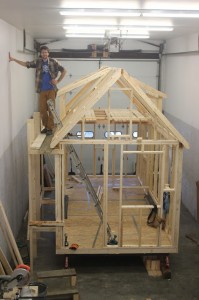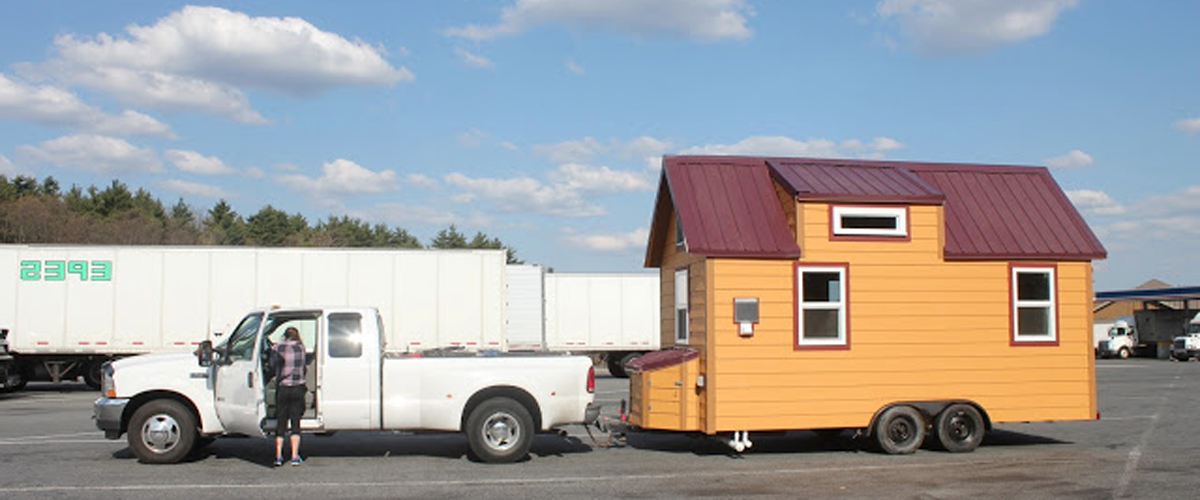by Matt Collette
People tend to be skeptical of environmental science and political science combined major Anderson Page’s house, a 144-square-foot unit built this spring as part of his senior thesis project.
“There’s a look in people’s eyes and a kind of smirk, because the whole thing almost sounds like a joke—a tiny house on a trailer,” Page said. “But while it’s small and looks almost like a gingerbread house from the outside, it’s really nice and even roomy on the inside.”

photo courtesy Anderson Page
Page, who is 6 feet 3 inches tall, designed the house to be as spacious and efficient as possible, putting careful thought into every detail of the design. The 11-foot ceilings keep the building from feeling cramped; at a housewarming party, eight friends fit comfortably inside.
“You can live in small spaces,” Page said, “but if they’re not designed well, it’s going to feel cramped, uncomfortable, and inefficient.”
Though he had initially intended on going to carpentry school after finishing high school, Page said his parents encouraged him to enroll in college, leading him to Northeastern. At Northeastern, he focused his studies on how to make buildings smaller and more efficient, with a particular emphasis on leaving a small carbon footprint and reducing utility costs. After spending the summer living in the house—which cost him about $16,500 to build—he plans to sell the unit and pursue other environmentally conscious construction projects.
Page chronicled his building project on a blog, “Tall Man, Tiny Mansion,” which he plans to continue updating over the course of the summer. He hopes his project—part of a small but growing trend—will challenge Americans’ long-standing assumptions about how much space they need.
“My project is a reaction, albeit an extreme one, to the McMansionization of the suburbs,” Page explained. “I think it could help a lot of people realize maybe you don’t need a home that’s 3,000 square feet.
“Most people aren’t going to move into a tiny house on a trailer,” he added, “but maybe they’ll realize they can do just fine in a 2,000-square-foot home or that it makes sense to put more emphasis on things like energy efficiency.”

